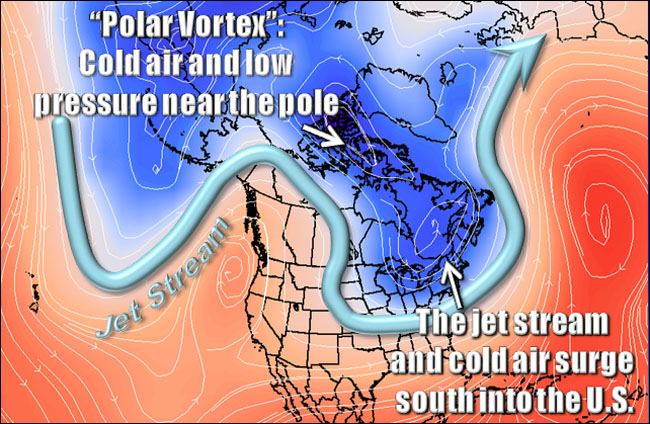Since late December, the atmosphere 18 miles above the North Pole has undergone a dramatic warming of as much as 100 F. This event is called a “sudden stratospheric warming” and has the potential to affect weather near the ground. SSWs occur about six times per decade and vary in strength and timing, although almost all of them occur in the Northern Hemisphere and only in the winter months when there is no sunlight at the pole. They are caused by an interaction of atmospheric waves near the earth’s surface which push air upwards, affecting the polar vortex which usually forms in winter around the pole. The SSW can cause the polar vortex to slip off the pole to one side or another like a beanie falling off your head, or it can sometimes split into two. Either of these will affect the weather at the surface. They have the potential to cause incursions of cold air into the mid-latitudes, which could result in more storms and even snow. However, this is most likely to occur in northern Europe or in the northeastern US.
A SSW can sometimes cause major storms but not every SSW causes a lot of cold weather for the US, which makes it hard to predict what will happen this year. In addition, the SSWs do interact with La Nina as well as other atmospheric oscillations, which make the prediction in any particular year even more difficult. One thing is sure, however, and that is that somewhere on earth, most likely northern Europe, is probably going to experience a cold spell in the next few weeks, based on this strong SSW. Here is a story from CBS News which explains more about the current SSW and how it might affect weather here in the US: https://www.cbsnews.com/news/stratospheric-warming-winter-weather-coming/.
